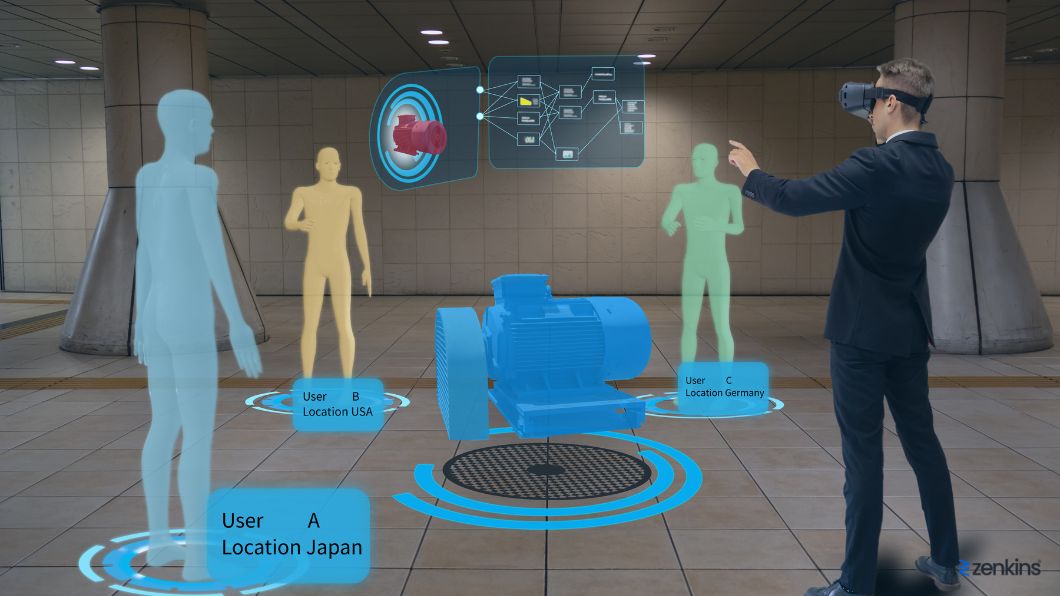Twin Power: How Custom Software Leverages Digital Twins for Optimized Manufacturing
Table of Contents
Introduction
In today’s fast-paced manufacturing landscape, digital transformation is driving unprecedented levels of efficiency, productivity, and innovation. One of the key technologies at the forefront of this transformation is the digital twin—a virtual representation of a physical asset or process. By leveraging digital twin integration, manufacturers can gain deep insights into their operations, predict outcomes, and optimize performance in real time. Custom software tailored to specific manufacturing needs is instrumental in harnessing the full potential of digital twins. In this blog, we will explore the concept of digital twins, delve into the benefits of custom software for their implementation, examine real-world applications, and discuss the future of manufacturing with digital twin technology.
Understanding Digital Twins in Manufacturing
Digital twins are virtual replicas of physical assets, processes, or systems that enable real-time monitoring, analysis, and optimization. By combining data from sensors, IoT devices, and other sources with advanced analytics and simulation capabilities, digital twins provide manufacturers with a comprehensive understanding of their operations. Digital twins can represent individual machines, entire production lines, or even entire factories, allowing manufacturers to visualize, simulate, and analyze complex systems with precision.
A digital twin is a virtual representation of a physical asset, process, or system. It mirrors the real-world counterpart in real-time, capturing data from sensors, IoT devices, and other sources to simulate its behavior and performance.
Digital twin integration enable manufacturers to visualize, analyze, and optimize their operations in ways previously unimaginable. Whether it’s monitoring equipment health, predicting maintenance needs, or simulating production scenarios, digital twins offer invaluable insights that drive efficiency, innovation, and competitive advantage.
Benefits of Digital Twins in Manufacturing
Predictive Maintenance
Digital twins enable predictive maintenance by continuously monitoring equipment performance and identifying potential issues before they occur. By analyzing real-time data from sensors embedded in machinery, digital twins can detect anomalies, predict failures, and recommend proactive maintenance actions, minimizing downtime and maximizing equipment uptime.
Performance Optimization
Digital twins facilitate performance optimization by providing insights into process inefficiencies, bottlenecks, and optimization opportunities. By simulating different scenarios and analyzing historical data, manufacturers can identify areas for improvement, optimize production schedules, and maximize throughput while maintaining quality standards.
Quality Assurance
Digital twin integration support quality assurance initiatives by monitoring key process parameters, detecting deviations from specifications, and flagging potential defects in real time. By correlating process data with product quality metrics, manufacturers can identify root causes of quality issues, implement corrective actions, and ensure consistent product quality across production batches.
Resource Optimization
Digital twin integration helps manufacturers optimize resource utilization by simulating production scenarios, predicting resource requirements, and optimizing resource allocation in real time. By modeling production processes and analyzing resource consumption patterns, manufacturers can minimize waste, reduce energy consumption, and optimize inventory levels, leading to cost savings and environmental sustainability.
Perfecting the Process: How Custom APC Software Ensures Consistent Manufacturing Quality
The Role of Custom Software in Digital Twin Implementation
While off-the-shelf digital twin platforms offer valuable functionality, custom software solutions tailored to specific manufacturing needs provide several distinct advantages:
Tailored Functionality
Custom software allows manufacturers to develop digital twins with functionality tailored to their unique requirements, processes, and objectives. By incorporating domain knowledge and industry expertise, custom digital twins can address specific challenges and deliver targeted solutions that align with business goals.
Integration with Existing Systems
Custom software seamlessly integrates with existing manufacturing systems, including SCADA systems, MES, ERP systems, and IoT platforms. Integration enables data exchange, interoperability, and centralized control, allowing manufacturers to leverage existing infrastructure and maximize the value of their digital twin investments.
Scalability and Flexibility
Custom software is scalable and adaptable, allowing manufacturers to customize and expand digital twin functionality as their business grows and evolves. Whether scaling up production, introducing new products, or integrating new technologies, custom digital twins can accommodate changing requirements and ensure continued performance optimization.
User Experience Optimization
Custom software prioritizes user experience by offering intuitive interfaces, customizable dashboards, and interactive visualizations tailored to specific user roles and responsibilities. By providing easy access to relevant information and actionable insights, custom digital twins empower operators, engineers, and managers to make informed decisions and drive continuous improvement.
Real-World Applications of Custom Digital Twins
Let’s explore some real-world applications of custom digital twin integration across various manufacturing industries:
Aerospace Manufacturing
In aerospace manufacturing, custom digital twin integration are used to simulate aircraft components, optimize manufacturing processes, and predict component performance under various operating conditions. By modeling complex systems such as engines, airframes, and avionics systems, custom digital twins enable aerospace manufacturers to improve design accuracy, reduce development time, and enhance product reliability.
Automotive Manufacturing
In automotive manufacturing, custom digital twin integration are employed to optimize production lines, monitor equipment health, and ensure product quality. By modeling assembly processes, robotic systems, and supply chain logistics, custom digital twins enable automotive manufacturers to streamline operations, reduce defects, and meet stringent quality standards.
Pharmaceutical Production
In pharmaceutical production, custom digital twin integrations are utilized to simulate drug formulations, optimize production parameters, and ensure regulatory compliance. By modeling chemical reactions, mixing processes, and packaging operations, custom digital twins enable pharmaceutical manufacturers to accelerate time-to-market, minimize batch variations, and ensure product safety and efficacy.
Consumer Electronics Manufacturing
In consumer electronics manufacturing, custom digital twin integration is used to optimize manufacturing processes, improve product design, and enhance supply chain visibility. By modeling production lines, testing procedures, and supply chain logistics, custom digital twins enable consumer electronics manufacturers to reduce time-to-market, increase product reliability, and meet customer demand with agility.
Case Study: Maximizing Efficiency with Custom Software and Digital Twins
Consider a automotive manufacturing plant facing challenges with equipment downtime and production delays. By implementing a digital twin solution coupled with custom software, the plant transformed its operations:
Real-Time Monitoring: Sensors installed on critical equipment continuously feed data to the digital twin, providing real-time insights into performance and health.
Predictive Maintenance: Custom software analyzes this data to predict equipment failures before they occur, enabling proactive maintenance interventions and minimizing downtime.
Optimized Production: Using scenario simulation capabilities, the plant optimizes production schedules, resource allocations, and workflow layouts to maximize efficiency and minimize waste.
Continuous Improvement: Custom analytics tools track key performance indicators and provide actionable insights for continuous improvement initiatives, driving ongoing optimization across the plant.
The Future of Manufacturing with Digital Twins
Looking ahead, the adoption of digital twins in manufacturing is poised to accelerate, driven by advances in IoT, AI, cloud computing, and data analytics. Key trends shaping the future of manufacturing with digital twins include:
AI-Powered Analytics
AI-powered analytics will enable advanced pattern recognition, anomaly detection, and predictive modeling capabilities, further enhancing the value of digital twins for manufacturing optimization and decision-making.
Edge Computing
Edge computing will enable real-time data processing and analysis at the edge of the network, reducing latency and enabling faster decision-making in manufacturing environments with limited connectivity or bandwidth constraints.
Interoperability Standards
Interoperability standards and protocols will facilitate seamless integration and interoperability between digital twin platforms, manufacturing systems, and IoT devices, enabling data exchange and collaboration across heterogeneous environments.
Digital Thread Integration
Digital twin integration with the digital thread will enable end-to-end visibility and traceability across the product lifecycle, from design and engineering to manufacturing, operation, and maintenance, driving greater efficiency and quality in manufacturing processes.
Conclusion
In conclusion, digital twins represent a transformative technology with the potential to revolutionize manufacturing operations, enhance product quality, and drive sustainable growth. By leveraging custom software solutions tailored to specific manufacturing needs, manufacturers can unlock the full potential of digital twins and realize tangible benefits across their operations. With the ability to simulate, analyze, and optimize complex systems in real time, custom digital twins empower manufacturers to stay competitive, agile, and resilient in today’s rapidly evolving manufacturing landscape.
Frequently Asked Questions
What is a digital twin, and how does it benefit manufacturing processes?
A digital twin is a virtual representation of a physical asset, process, or system that replicates its real-world behavior in a digital environment. In manufacturing, digital twins enable manufacturers to simulate and analyze production processes, predict performance outcomes, and optimize operations. By providing real-time insights and predictive capabilities, digital twins help manufacturers improve efficiency, reduce downtime, and enhance product quality.
How does custom software leverage digital twins to optimize manufacturing processes?
Custom software solutions are designed to integrate with digital twin models and leverage their capabilities to optimize manufacturing processes. By connecting to sensors, control systems, and IoT devices, custom software captures real-time data from physical assets and feeds it into the digital twin model. Advanced analytics and simulation algorithms then analyze this data to identify inefficiencies, simulate different scenarios, and optimize process parameters, resulting in improved performance and efficiency.
Can custom software solutions tailor digital twin models to specific manufacturing operations?
Yes, custom software solutions can tailor digital twin models to the specific needs and processes of each manufacturing operation. By customizing the parameters, variables, and algorithms within the digital twin model, custom software ensures that it accurately represents the behavior of the physical assets and processes it is simulating. This customization allows manufacturers to optimize processes, predict performance outcomes, and make informed decisions based on their unique requirements and objectives.
How do digital twins facilitate predictive maintenance and asset management in manufacturing?
Digital twins enable predictive maintenance and asset management by continuously monitoring the condition and performance of physical assets in real-time. By analyzing data from sensors and control systems, digital twins can detect anomalies, identify potential failures, and predict maintenance needs before they occur. This proactive approach to maintenance helps manufacturers minimize downtime, extend asset lifespan, and optimize maintenance schedules, resulting in improved reliability and efficiency.




